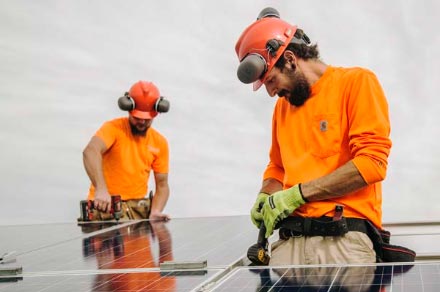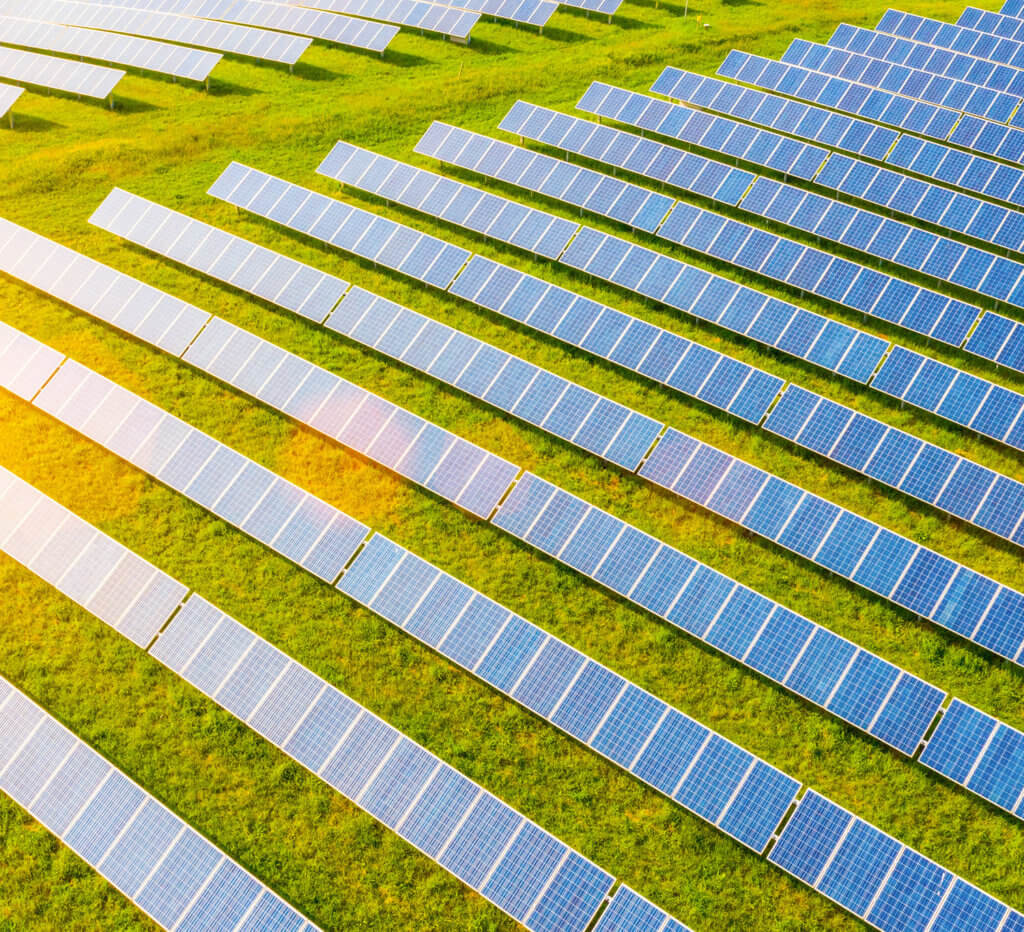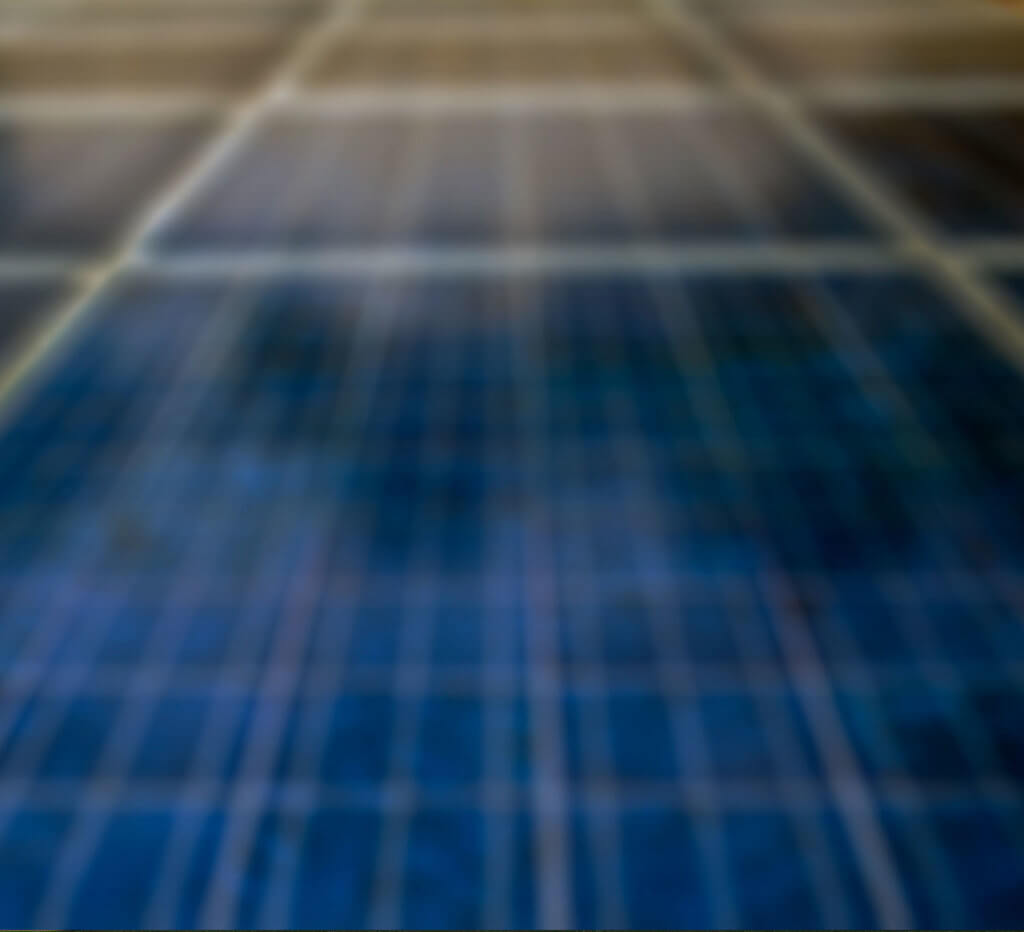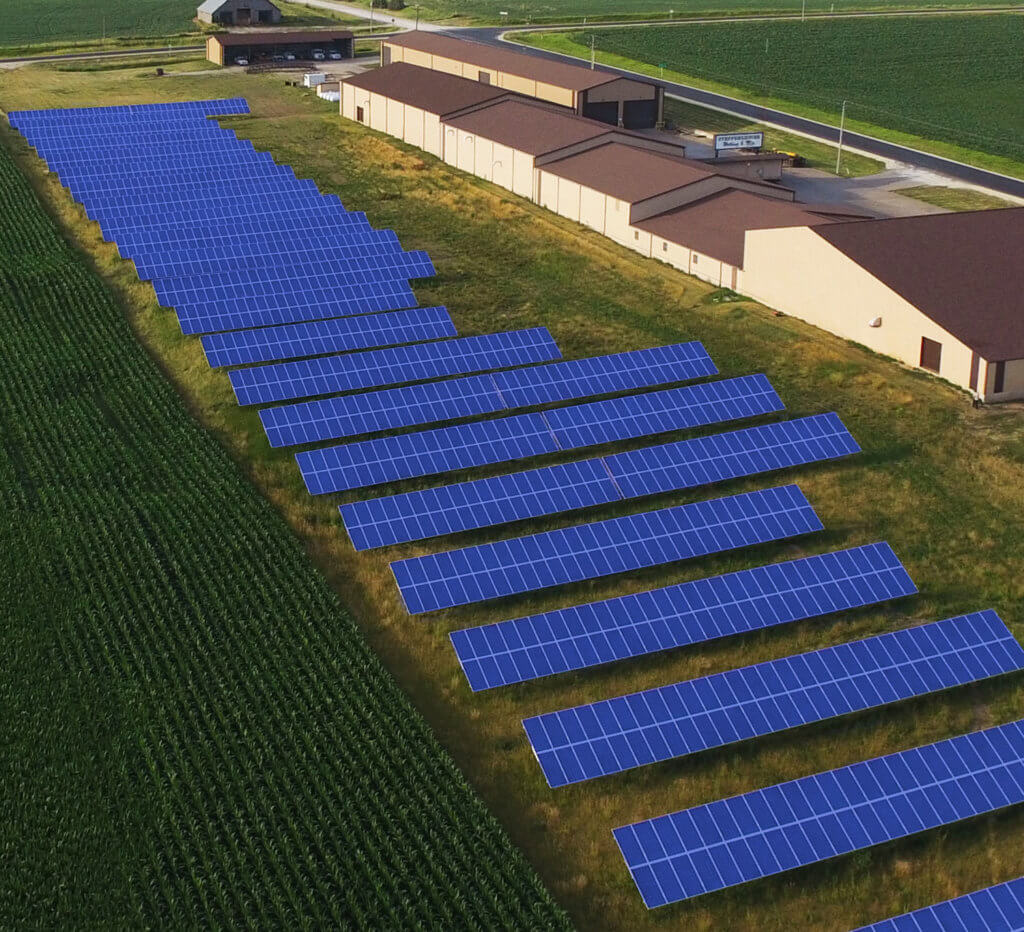If you’ve been on the Loop Trail near the Maharishi International University Solar Power Plant you may have noticed something new at the solar field this summer – a flock of sheep.
MIU partnered with Emily Mauntel, and alumna of the university’s Regenerative Organic Agriculture program (Class of 2020), on a solar grazing initiative. Solar grazing is the use of sheep to manage vegetation at solar sites. It’s a type of agrivoltaics – the combination of agriculture or livestock with solar power.
The project is a win-win; Emily can feed her sheep for free and the university no longer has to pay to mow the 6 acre solar site.
The project is Emily’s brainchild. She came up with the idea while driving past large solar fields in Minnesota. Emily interned at a sheep ranch in Oregon, so she was already familiar with managing livestock.
“I used to graze sheep on vineyards in Oregon,” Emily said. “And so I thought: oh cool, out here it’s solar arrays.”
When Emily came back to Fairfield she approached MIU with her proposal. University administrators were enthusiastic; in fact, they had already heard of solar grazing and were actively looking for sheep farmers. With a greenlight from MIU and Ideal Energy, the solar contractor that built and maintains the array, Emily and her investor traveled to Texas to acquire a flock.
Her sheep are White Dorpers, a popular breed for solar grazing. They can easily tolerate Iowa’s summer heat and have excellent parasite resistance, allowing them to graze in the same area without issue. In addition, Dorpers are not mischievous, destructive, or prone to escape – common problems with goats and some other sheep breeds.
Emily has 35 sheep at the solar field: one ram, 30 ewes, and four lambs. They’ve been enjoying the grass – and the shade of the solar panels – since their arrival in May. Emily explained that the grass is so high quality – in part because the MIU Pollinator Project seeded the site with clover – that the sheep can graze throughout the summer without being moved or given additional feed.
“It’s perfect because it’s already fenced, so you don’t have to spend money on that, and the grass gets high,” Emily said.
Benefits of Solar Grazing
Solar grazing offers many benefits. It turns a liability into an asset. Solar farms can reduce costs and carbon emissions, while livestock owners can feed their animals for free and, in some cases, even get paid for grazing services.
Safety. Solar grazing is safe and low impact. Sheep are less likely than mowing equipment to damage solar equipment. Grazing is also safer for workers than using machinery.
Sustainability. Grazing reduces the environmental impact and cost of mowing. Emily’s sheep only have to be transported twice: at the beginning and end of the grazing season.
Cost. Solar grazing can reduce mowing by an average of half to 2/3, yielding significant savings on labor and fuel. At the MIU Solar Power Plant, grazing entirely eliminated mowing this season. Emily was told by a University administrator that her grazing project will save MIU around $5,000 in mowing costs this year.
Land Use. Solar grazing, like other agrivoltaics practices, puts solar land into agricultural use, reducing competition between renewable energy and the food supply.

Challenges of Solar Grazing
One of the key challenges with solar grazing is coordination between small farmers and the solar farm owners, which are often large corporations. Emily overcame this issue because of her relationship with MIU. Elsewhere, agrisolar researchers are hoping that farmers cooperatives can help solve this problem.
Solar Grazing is Gaining Momentum
Cornell University research project recently received $500,000 in USDA funding to study sheep grazing at solar sites. This interdisciplinary team includes researchers studying animal science, soil carbon sequestration, vegetation diversity, and pollinator habitats.“Sheep are successful at vegetation management in solar sites,” said Niko Kochendoerfer, a Cornell postdoctoral research fellow. Solar grazing experts say any properly built solar installation is suitable for grazing. There are very few specific requirements. Solar panels need to be high enough off the ground that sheep can graze under them, panels need good wire management, and the site needs a fence. “If it’s easy to mow, it’s easy to put sheep on,” said Brock Phillips, of Carolina Solar Services, a North Carolina company that offers solar grazing services.
Successful Beginnings
Emily considers this season a trial run. So far, everything has been going smoothly, she said. The sheep are happy at the solar field, Emily is saving money on feed, and MIU is saving money on mowing and reducing carbon emissions.
If the program is successful this year, Emily looks forward to doing it again next year.








